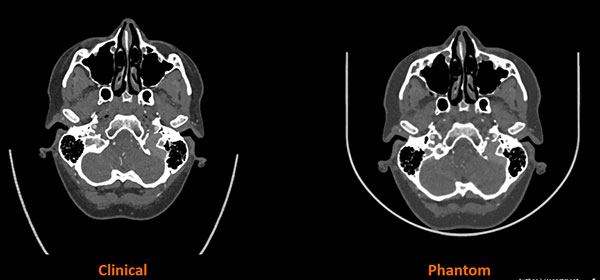Stratasys Partners with Siemens Healthineers
The joint development leverages Stratasys’ PolyJet and RadioMatrix technology with Siemens Healthineers’ advanced algorithm for scanned patient images.

Use of 3D printing may improve outcomes by providing 3D modeling to provider doctors with real scenarios to practice and consult with. Image courtesy of Business Wire.
Latest News
December 1, 2023
Stratasys Ltd. has partnered with Siemens Healthineers to carry out a research project designed to develop new solutions for the advancement of medical imaging phantoms for computed tomography (CT) imaging.
CT phantoms are specialized devices used to evaluate and ensure the performance of CT scanners. Designed to simulate certain characteristics of the human body, phantoms enable the assessment of various core metrics, including radiation dose and image quality, aiding calibration and safeguarding consistent scanner performance.
The joint development leverages Stratasys’ PolyJet technology and its RadioMatrix technology, and Siemens Healthineers’ advanced algorithm aimed at translating scanned patient images into specific material characteristics with radiopacity of human anatomy. The solution will enable tailored phantom manufacturing and creation of realistic human anatomy characteristics with radiographic accuracy of patient-specific pathology, the companies report.
This joint project will transform how phantoms can be sed in the medical field, and possibly enable device manufacturers and academic facilities to replace human cadavers with 3D printed structures. Having this capability can help minimize human variability, the companies report. This work may also produce research data, providing insights for advancing CT system algorithms, driving materials development, and generating new application areas.
“The current limitations of imaging phantoms have been a longstanding challenge for the radiology community,” says Erez Ben Zvi, vice president medical at Stratasys. “This partnership with Siemens Healthineers will enable us to jointly explore the vast possibilities of our radiopaque materials and 3D printing technologies to overcome these barriers.”
Starting with the manufacturing of 3D printed phantoms for smaller-scale anatomies of the head and neck region, research will involve production of larger, complex anatomies—leading to the Phase One endpoint of 3D printing a heart model and of an entire human torso with radiographic accuracy.
“Knowledge gained from this project provides a breakthrough in medical imaging that will open up new avenues for uses when it comes to 3D printing and imaging,” says Lampros Theodorakis, head of computed tomography product & clinical marketing at Siemens Healthineers.
Sources: Press materials received from the company and additional information gleaned from the company’s website.
More Stratasys Coverage
Subscribe to our FREE magazine, FREE email newsletters or both!
Latest News
About the Author
DE’s editors contribute news and new product announcements to Digital Engineering.
Press releases may be sent to them via [email protected].






